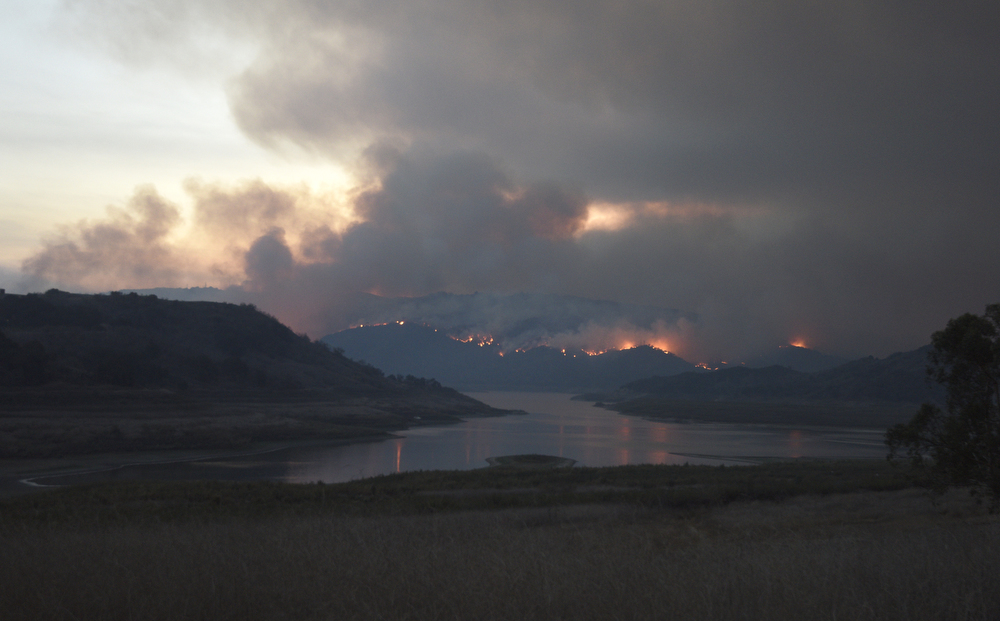The Danger of Adding Houses, or Fuel, to the Fire
State Programs to Increase Housing Stock Must Recognize Rural Challenges

I love Santa Barbara and its surrounds, and I remember well my visits over the years when my son went to college there. Your community shares very similar issues with fire danger as my foothills community of Grass Valley. Indeed, we share with all Californians the statewide impacts of increasing super fires. Please join me in letting our state legislators know that any state programs designed to increase housing stock needs to recognize rural challenges.
I’ve written to Governor Newsom and our state legislators, asking that in the process of promoting more housing construction, that they please avoid adding fuel in the form of housing to our rural fire dangers.
Any failure to address the conflict of adding housing to dangerous rural areas is an issue that is or should be of concern for all California residents — every resident statewide is already paying for the ever-increasing costs of fire prevention, firefighting, and fire recovery via statewide “socialized” higher taxes and insurance and utility bills, and these costs will only go up. Any state legislation promoting unconstrained housing development in fire-prone areas borders on criminal negligence.
At the risk of being labeled an alarmist, note these excerpts from our 2018-2019 Nevada County Grand Jury report “Facing Year-long Fire Seasons: Are We Prepared?” which is aimed specifically at local fire dangers. The report pointedly focuses on fire prevention, with little to offer on the essentially insurmountable challenges of effective firefighting and evacuation. Regarding evacuation, for example, the Grand Jury suggests residents consider evacuation routes including “dirt roads, trails, pastures, drainage ditches, etc.”, which is fine for those young, adventurous types with high-clearance 4-wheel-drive vehicles, but that’s of little comfort to Grass Valley’s predominate population of senior citizens driving sedans.
Additional excerpts:
• the communal and individual responsibilities pertaining to fire remain immense
• some fire experts believe that Nevada County is just as vulnerable as Butte County … others say it is not a matter of “if” but “when” the next big wildfire will occur
• of the County’s 600 miles of County roads and 2,200 miles of private roads, up to 75 percent of the roads in the county may not be maintained with best practices and some private roads are simply considered “no go zones” for fire engines and other emergency response vehicles if a fire occurs
• in 2018, only $442 was spent on zoned evacuation planning, in which areas are evacuated in a staggered fashion. There is no comprehensive County fire evacuation plan
• and, to my point, many communities in the county were simply not built with evacuations of a scale commensurate with their current populations in mind. This problem deepens as communities continue to grow.
Add to that our new paradigm of addressing high wind/fire danger days with pre-emptive and highly disruptive regional power shut-offs, with their attendant homeowner impacts on well-water pumps, refrigeration, medical devices and the like, and community impacts on businesses, traffic lights, medical services, etc., one has to ask, “is this the best we can do?”
Before our legislators go forward without addressing rural fire dangers, they should ask their millions of urban constituents if they are happy subsidizing housing developments that are typically not even affordable to most rural residents. Consider this a plea to remember the old trope that one size does not fit all and, that, in the process of mitigating one problem, you are not exacerbating another. Or, if you prefer, please do not add fuel to the fire.
Terry Lamphier is a former Nevada County supervisor and former Grass Valley planning commissioner.



